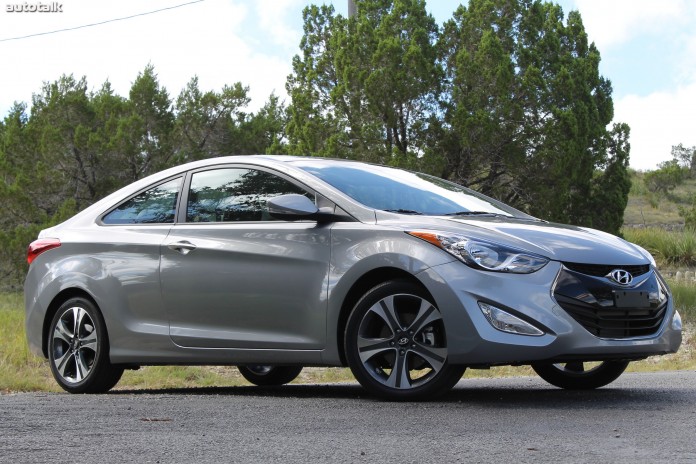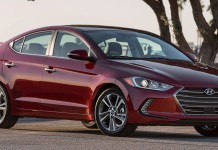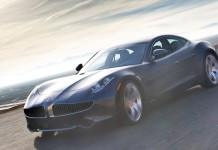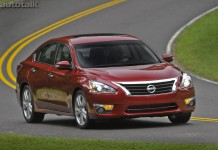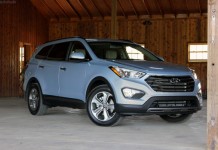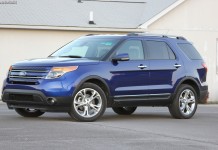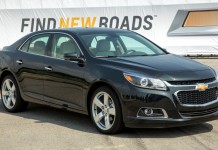Somewhere in America, there is a person searching for something. What they want is a guarantee, a sure thing, an absolute and a most definitely. The only thing is, this person is a bit different from the rest. They refuse to roll with the masses, follow the crowd, buy into fads and walk up to the check-out counter with all the others. When it comes time for them to buy a car, they steer clear of the cattle corrals in utter fear of being stuck with a washing machine. As much as they value efficiency, function and quality, this person actually enjoys and finds pleasure in driving. If their hunt for a vehicle wasn’t hard enough, the sedan, SUV, crossover and wagon segments do nothing for them; leaving an even smaller allotment of subjects to pick from. Their search would be over if only there was a practical, efficient and stylish coupe that was also rather happy to be alive. Now, that quest has come to a close. Welcome to the world the 2013 Hyundai Elantra Coupe.
Building a two door out of a four door shouldn’t be that difficult but even still, there have been times where things haven’t gone according to plan. In order to create something truly successful, an automaker must first start with an already successful platform. Given that the Elantra Sedan recently was named the 2012 North American Car of The Year, the Coupe has some seriously stout DNA. Building off the same compact front wheel drive platform, the two door Elantra shares the same wheelbase and layout with the sedan but does things in a much sportier and expressive manner. Aimed directly at the Honda Civic Coupe, the Hyundai seems to have taken every trick from the “small but fun” two door play book. Separating itself from its higher volume sibling are items such as larger wheels, sharper chassis tuning, a chicer interior and a more rambunctious body. The now signature fluidic design keeps the Coupe in the Hyundai family and if pointed straight ahead, the faces of the two Elantras are rather difficult to tell apart. The big difference lies along the sides as the A and C-pillars are longer to flow better with the widened fender flares. At the back, wrap-around taillamps, an integrated spoiler, a beveled rocker panel and chrome exhaust tips distinguish the Coupe further from the Sedan. Overall, the two door Elantra is seriously handsome and looks just right without appearing “hacked together”.
To make sure the Coupe’s character matches its looks, we traveled down to Austin, Texas in order to find out for ourselves. As the Elantra Coupe hits the market, it will be offered in five different versions: two GS, two SE and a single Technology. The base car with a manual transmission starts out at $17,445 which is just $750 more than the base Elantra Sedan. Opting out for the automatic will cost an extra $1,000. Included in the GS are standard features such as air conditioning, bluetooth phone pairing, power windows, tilt and telescoping steering wheel, satellite radio and heated front seats. For $2,300 extra, a GS can become a SE which will include extra pieces such as unique 17 inch wheels, a sport tuned suspension, power sunroof, leather seats, steering wheel and shifter, turn signal side mirrors and a rear spoiler. Only available as an add-on for the automatic SE is the Technology Package which gives the Elantra Coupe upscale features such as navigation, back up camera, dual zone automatic climate control, automatic headlamps and a 360 watt stereo with external amp. With a price of $2,350, the most expensive version of the two door Elantra will carry a final MSRP of $23,095.
Just like its sedan sibling, the Coupe makes do with Hyundai’s own 1.8 liter, Nu inline four cylinder for motivation. Using variable valve timing and conventional port fuel injection, this simple dual cam engine is unchanged when placed under the hood of the two door. Powering the front wheels via a six speed automatic or manual is 148 horsepower and 131 lb-ft of torque, both of which occur rather high in the rev range. The Nu isn’t a low-down, pulling machine so much as it’s a lightweight revver. Real power doesn’t show its face until above 3,000 rpms at which point, the 1.8 sings a softly sweet four cylinder song. Never once does the engine sound overwhelmed, old or buzzy; a stark contrast to other small car offerings. While in Austin, we spent our time with a SE manual which provided smooth shifts both up and down. The clutch is lighter than a feather while the shifter is accurate enough that gear changes were never missed. Given the Nu’s peaky nature, spinning the snot out of the Elantra Coupe followed by fast shifts provided something rather rare in today’s market: a smile. Low-end torque and overall power could be improved to better match the Coupe’s sporty appearance and nature but that could had with a larger engine option. If Hyundai found a way to place the base Sonata’s 2.4 liter direct injection block under the two door Elantra’s hood, a true winner would easily be created that would give the Civic Si a serious run for its money.
While there may not be a difference powertrain wise between the Sedan and the Coupe, the two door breaks away from the four door with its chassis. Even though the wheelbase and set up are similar, subtle differences in the car’s damping, steering and components were made to give the Coupe more brash. Like other small Hyundai’s of late, the Elantra uses an electric assisted steering pump that is specifically calibrated for the Coupe’s personality. Using a MacPherson strut front and torsion bar rear suspension set up, the two door benefits from thicker sway bars and shaper dampers compared to the Sedan for faster moves and better control. At each end, 22 mm stabilizer bars keep body roll at a minimum while the monotube shocks receive a specific tune for each wheel size. Disc brakes front and rear separate the Elantra from the likes of the Honda Civic and 60 mph to nothing stops can be had in just 136 feet. While strong, the brake pedal is still a bit overboosted and low-speed stops can be jerky at first.
Driving the Coupe is typical small car nimble and quick. The steering recalibration may have lessened the “weird” feeling usually associated with electric pumps, but it is still obviously present. At higher speeds, the wheel is nicely weighted and provides enough feedback that the Coupe will tell you when it’s time to calm down. Cornering grip is ample and when faced with fast sweepers, the big sway bars keep the car flat and confident. This is easily one of the easiest cars to drive that would be right at home in the city, on a mountain road or at an autocross event. It is an excellent example of what middle-ground means: it’s not too soft and not too hard. The Elantra Coupe is tuned just right to offend no one and get along with everyone.
No matter how practical and efficient a sedan can get, no four door can match the outright cool factor of a coupe. For that reason, the two door segment may be small but it will always have a place in the automotive market. This is especially true in the U.S. where the Coupe is the ideal vehicle choice for the strongly independent 20-somehting. Reliability and economy are great but they shouldn’t come at the cost of fun and style. The Elantra Coupe hits home by taking what makes the Sedan a North American Car of The Year and giving it an extra shot of adrenaline. The two door still gets 40 mpg on the highway, is still backed by the industry’s greatest standard warranty and is still confidently smooth but it goes about its day with added flair that can’t be had with four doors. It may appeal to a specific type of buyer but in the end, there’s nothing wrong as that buyer knows exactly what they want out of a car. The Hyundai happens to mark off each item on their check list and does so with a personality that is unmatched by its rivals. When practical reliability is wanted alongside low-cost style and fun, look no further than the 2013 Elantra Coupe.

